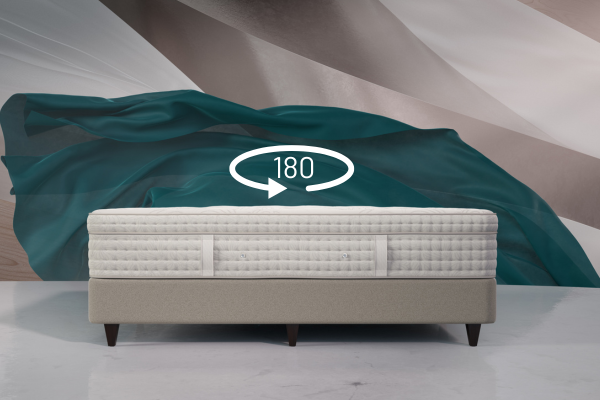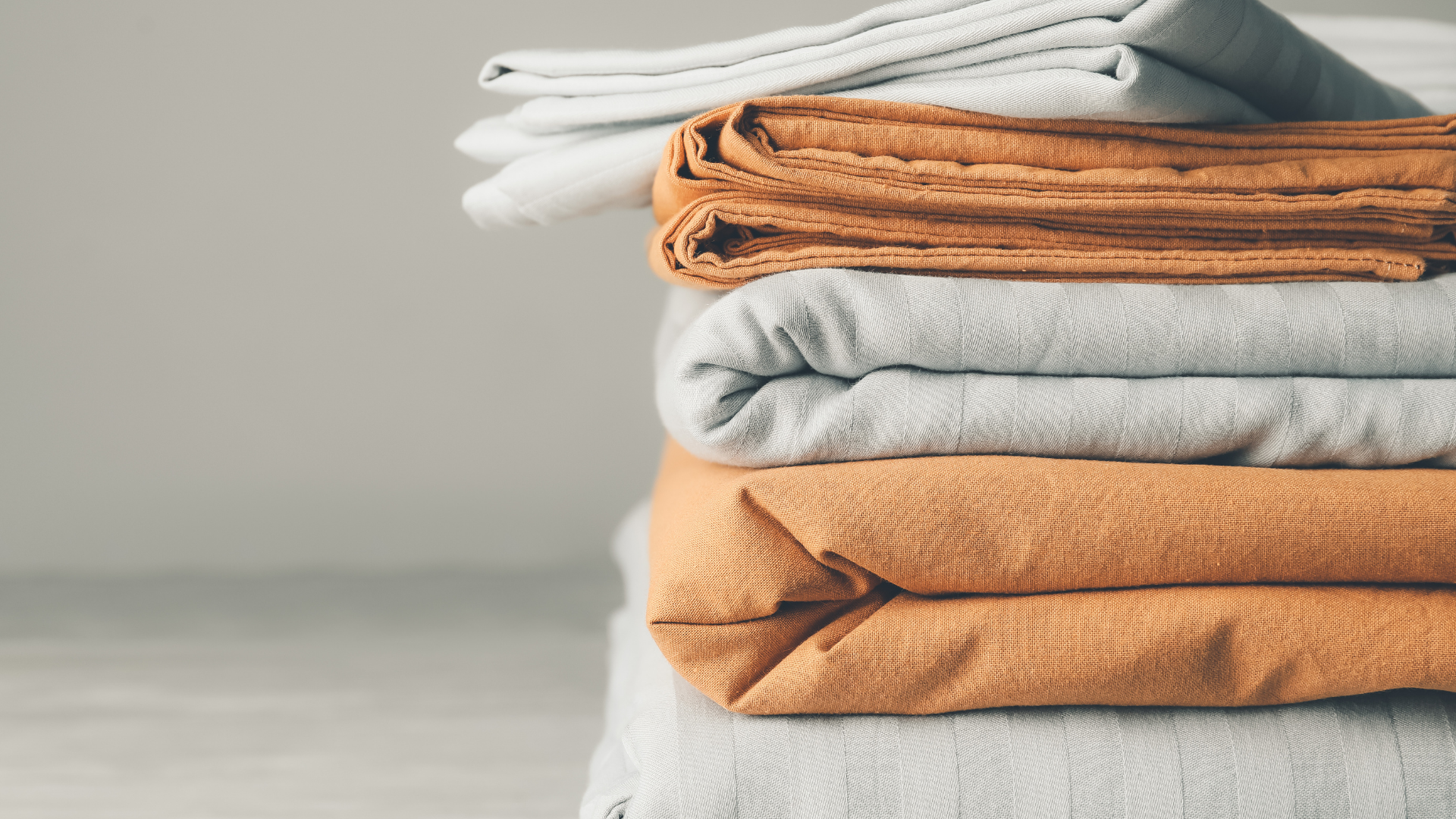Most mattresses should last between 7 and 10 years. This timeframe might vary based on how the mattress is made, handled, and used. Everything from manufacturing quality and craftsmanship to the sleeper's size and weight can impact your mattress's longevity.
We discuss these factors along with tips on when to replace your bed and how to care for it.
Jump to mattress type:
Though it is hard to say how long a mattress might last, some materials tend to wear out faster than others. Here is an approximate guide based on the mattress type.
| Mattress Type | Lifespan |
| Foam | 5-7 years |
| Hybrid | 6-10 years |
| Latex | 6-10 years |
| Innerspring | 7-10 years |
| Memory foam | 7-10 years |
Latex

Latex mattresses come in several variations. These beds tend to be heavier and may trap heat throughout the night. Their lifespan depends on the type and quality of the manufacturer's latex.
Natural latex is made of rubber tree sap and is often blended with cotton or wool. Popular for its hypoallergenic properties, a natural latex bed can last nearly 20 years if cared for properly. Synthetic latex is typically more affordable and may suit those with latex allergies. However, synthetic latex mattresses are less durable, averaging between 6 and 10 years of lifespan.
Foam

Foam mattresses are increasingly popular due to their lightweight construction and the ease with which they may be rolled up and shipped. Though soft to the touch, many foam beds lack sufficient back support. Much like latex, foam mattresses vary significantly in terms of their materials and corresponding quality. Memory foam mattresses can last 10-15 years, especially if they are made with high-density materials and maintained well.
Hybrid

As their name suggests, hybrid beds are a combination of other mattress types. Traditionally, they feature foam or latex layers with springs. At face value, hybrid mattresses offer the best of both worlds in terms of comfort and support; however, this depends on the quality of materials and the kinds of springs used.
Hybrids may last 6–10 years, especially if they are made with latex or memory foam. Those made with older, less durable types of springs (such as pocket coils) or low-density foams are likely to weaken or sag faster.
Innerspring

Innerspring mattresses feature a system of coils or springs that distribute weight across the surface and support the body. If made with high-quality materials and cared for appropriately, innerspring mattresses may last up to 10 years or more.
Not all innerspring beds are created equal, with some spring types, such as pocket coils or Bonnell springs, wearing out significantly faster than others. Our Sealy Posturepedic mattresses feature uniquely designed, twice-heat tempered titanium coils backed by a 7 or 10-year warranty, depending on the mattress range.
Factors Influencing Mattress Lifespan
The lifespan of a mattress depends on:
- Materials and mattress type
- Body weight and sleep positions
- Chosen bed base
- Care and cleaning
Though they vary widely across the market, materials and construction methods are one of the key factors influencing longevity and durability. If you are looking for a bed to last at least 10 or more years, aim for high-density foams, latex or twice-tempered springs. Higher quality materials are often reflected in the price but be sure to check the bed specifications you wish to purchase.
The lifespan of a mattress depends not only on its build quality and materials but also on how it is used and maintained. Factors such as your body weight and sleeping position can affect the materials over time. For instance, side sleepers may experience faster wear in the cushioning around their hips and shoulders compared to other areas. This is particularly true if the mattress is never rotated or if the bed frame lacks proper support. Additionally, improper cleaning techniques and inadequate care can shorten the mattress's lifespan. Read our Mattress care guide to learn to care for your mattress adequately.
When to replace a mattress?
The most obvious sign that your mattress needs replacing is visual deterioration. Check the surface for sagging, tears or discolouration. You may also hear excessive creaking or squeaking if the internal support layers are damaged.
If you are experiencing any physical discomfort or are able to see any visual deterioration, think about how many years it has been since you purchased your current bed and consider replacing it to safeguard the quality of your sleep deterioration.
How to care for a mattress to last longer?
The manufacturer or retailer may have specific timelines and methods regarding mattress care and maintenance. Here at Sealy, we recommend the below steps to getting the most out of your investment.
Regularly rotate
Rotating your mattress regularly will ensure an even amount of wear across the entire sleep surface. Spin the mattress 180 degrees, using the handles to assist with placement.Cleaning and care
It is important to keep your bed clean so that it continues to stay fresh and perform as intended. You can ensure that your bed is well maintained in 4 simple steps.
Additionally,
- Vacuum the surface regular
- Keep dry and out of sunlight
- Treat spills as much as possible and wipe off immediately
- Avoid dry cleaning chemicals or detergents
- Avoid scrubbing the fabric
- Ensure there is adequate ventilation
- Use an appropriate bed base
Use an appropriate bed base
It is important to ensure that your mattress is well supported. Platform bed bases offer more support, improving comfort and mattress longevity, while slat bases can provide better ventilation and flexibility, and are better suited for certain mattress types.

FAQs
-
How often should a mattress be replaced?
On average, a mattress should be replaced after 7-10 years. -
Is a mattress still good after 20 years?
A good mattress typically lasts 7-10 years. However, this is a general guideline. A quality mattress may be enjoyed for decades with appropriate care and maintenance. As long as your mattress offers the right comfort, support, and hygiene, it does not need to be replaced. - How can I tell if my mattress is bad?
There are several signs that it is time to replace your mattress, such as waking up exhausted or having difficulty falling asleep, experiencing general aches and pains, deep body impressions, stains or discolouration, and hearing squeaks.



